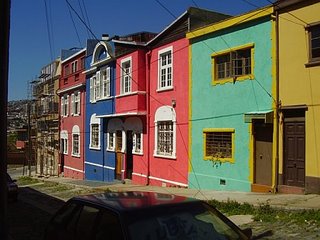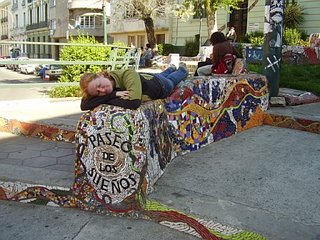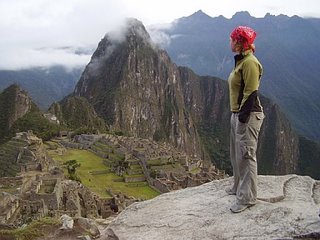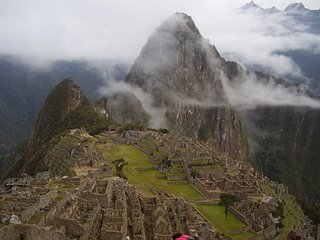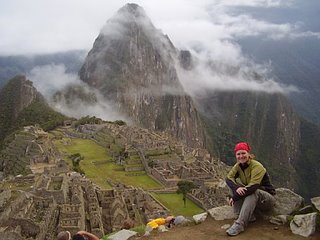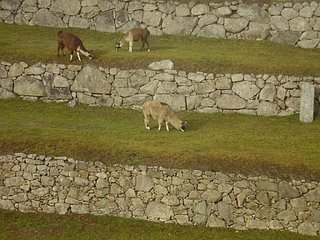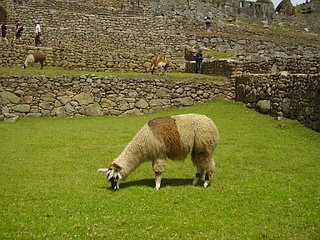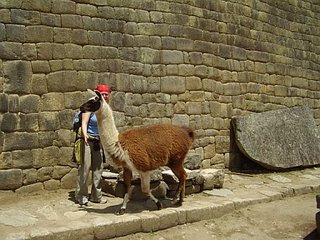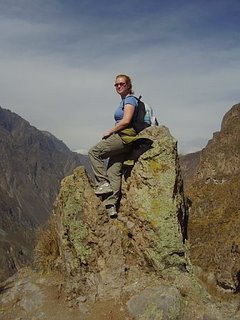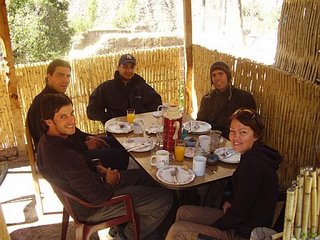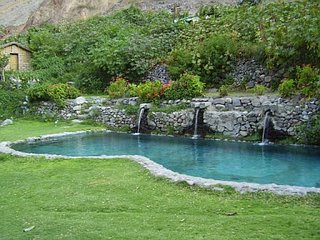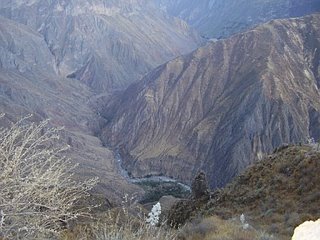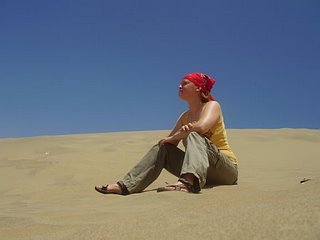Well, now that I´m nearing the end of my time in Peru, I figure I should write about it. I´ve been on what the Lonely Planet dubs "The Gringo Trail" because it covers some of the most well-known sites in Peru. It´s been very touristy, but nonetheless amazing. I just wish I could shake the feeling that I´m paying "precios especiales" (special gringo prices). It´ll be nice to be out of the tourist circuit soon so I´m not being ripped off on a regular basis.
Peru has been just as diverse as Ecuador, but in very different ways. First up was the very westerized and crazy-busy Lima (see pics
here), then it was off to the desert. Having grown up in the desert, I wasn´t too thrilled about spending much time here, but it was quite different than anything I´d ever seen in Arizona. And it helped that I passed through much of it in the dark on over-night buses. An invaluable lesson from this trip - pay the extra money for a comfortable over-night bus. I spent a 10 hour bus ride from 10 p.m. to 8 a.m. on my way to Nazca in a seat that didn´t fully recline, next to a window on one side that wouldn´t close all the way (letting the freezing wind in all night), and on the other a mother with a wiggly child on her lap. I also got to listen to the squeaking of some unknown loose part that I began to hope was an essential component of the engine that was about to fall off and end the bus ride in a giant ball of flames. At least it would´ve been over.
So I started my trip through the desert in a very strange and unreal place. The city of Huacachina is an oasis-town with a handful of houses and hostels perched around a lagoon and surrounded by giant dunes.
The main attractions here are dune buggy rides into the desert and sand-boarding. Of course I had to do both, but sadly, there are no pictures. I had a blast, but I definitely don´t think a sand-boarding craze is in the near future.
While in Huacachina, I hiked up to the top of the dunes to gaze out over the tiny town.
I love this photo because it looks like someone took it for me, but I used my handy timer to do it myself. I think it covers so many of the themes of my journey: adventure, reflection, observation and perhaps most importantly, independence.
After Huacachina, I took the infamous over-night bus to Nazca to see the even more infamous Nazca lines. The Nazca lines fall into the category of not-worth-it-but-you-can´t-come-to-Peru-and-not-see-them. If you haven´t heard of the Nazca lines, you don´t really know much less than the people who have been studying them for 100 years. The lines are the mysterious formations created over hundreds of square miles of desert that can only be see from the air, prompting lots of theories that they were created as landing sites for aliens hundreds of years ago. Other theories say that they were a sophisticated map of the constellations, a map of the sources of water in the desert or, most widely accepted, that they were used by the Nazca people in rituals surrounding the importance of water. Pretty incredible stuff, but not worth what I paid to go up in the air for 20 minutes and barely get a glimpse of them. And of course, my pilot, despite the fact that I have passable Spanish skills, insisted on using English, which consisted of, "Lady, hey lady, the lines, you see the lines, look there lady, the lines, you see?" It was unforgettable, but not in the way the Nazca people had intended.
In my final town for this entry, I thankfully left the desert and headed into the gorgeous colonial town of Arequipa.

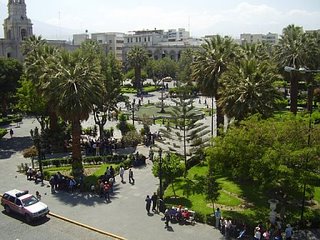
I´m torn when I come to towns like this because they are so beautiful and yet are the result of the Spanish conquest and massacre of a giant group of native people. Oh well, like a good American tourist, I put the history of injustice and genocide out of my mind soon after I arrived.
Arequipa really is tranquilo like I keep hearing people say about every town I´ve been to since I arrived in South America. I passed a few days drinking coffee and pisco sours in the balconies of restaurants like this one overlooking the Plaza de Armas.
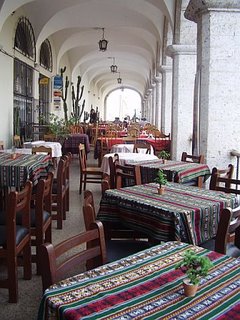
After a while of rest and relaxation, I was ready for more adventure and headed out on a 3-day trek into the second deepest canyon in the world, Canyon del Colca. This was by far the best thing I´ve down in Peru and ranks high on the list for the whole trip. However, I´ve written a novel in this entry and am tired as hell, so details of the canyon are soon to come. Stay tuned . . .
